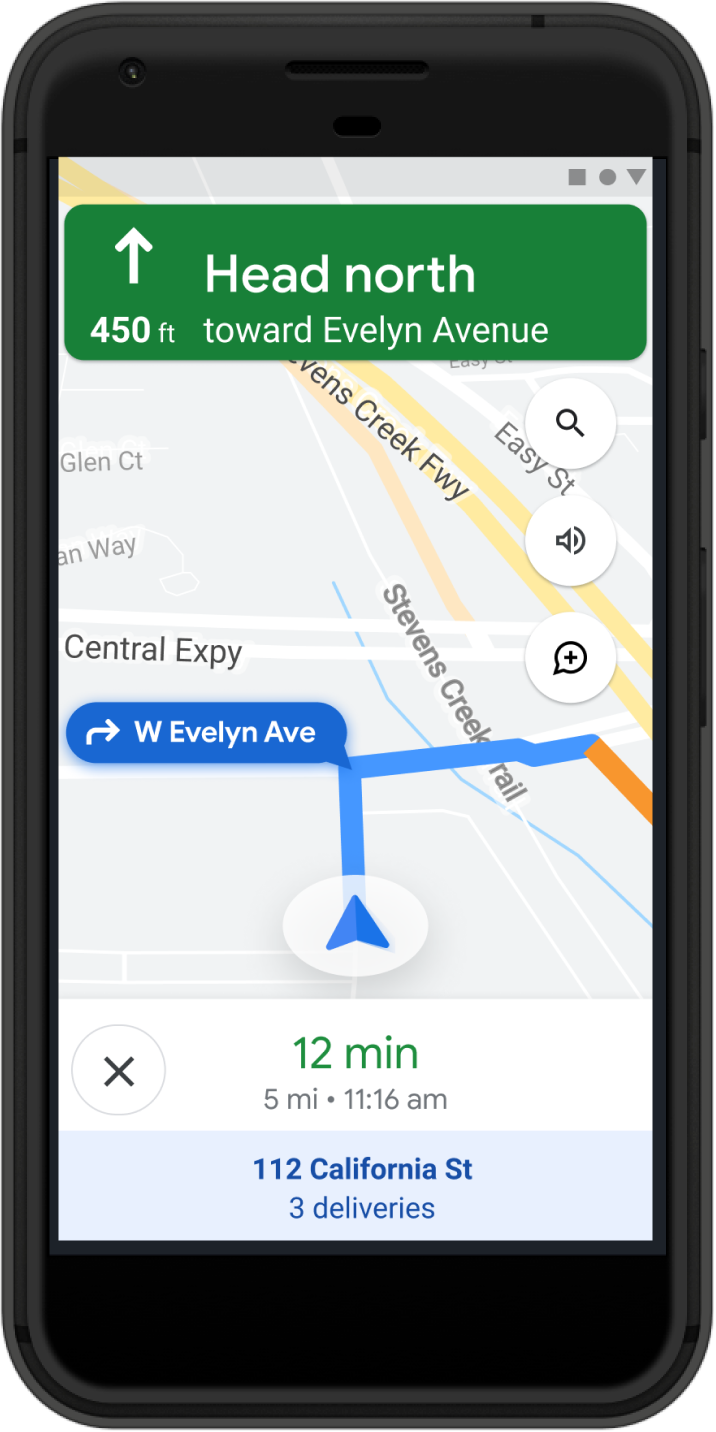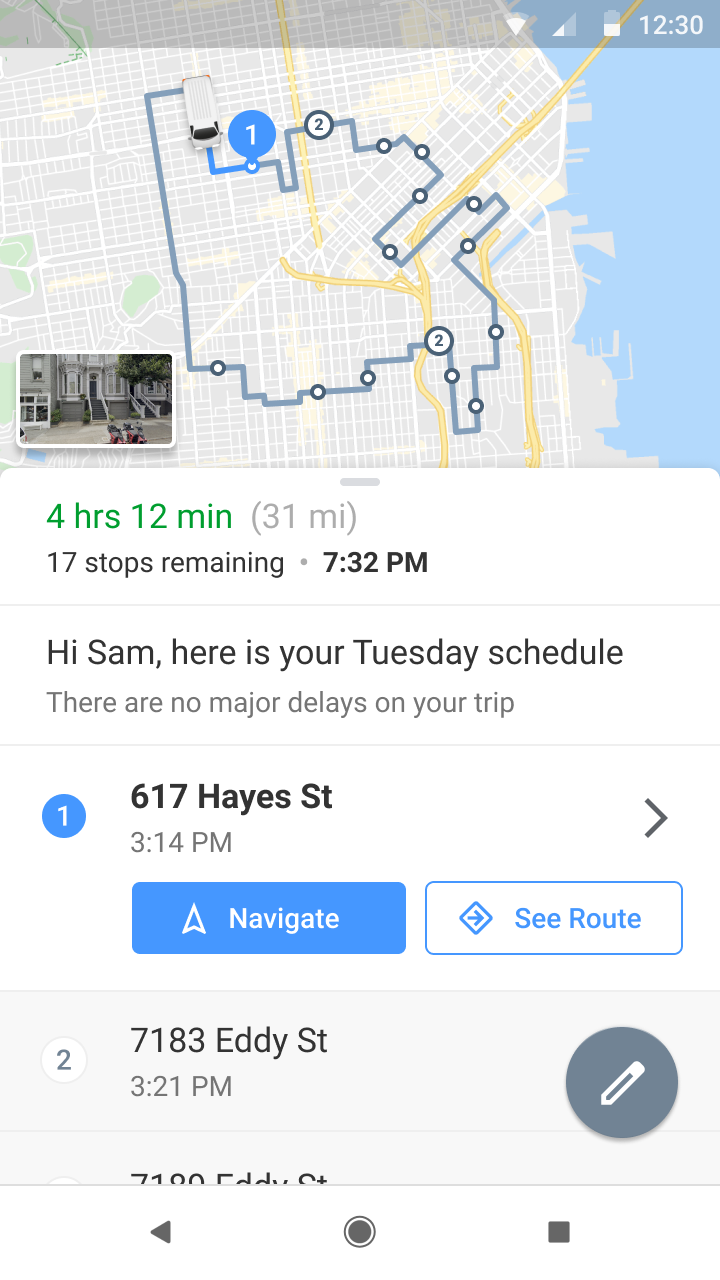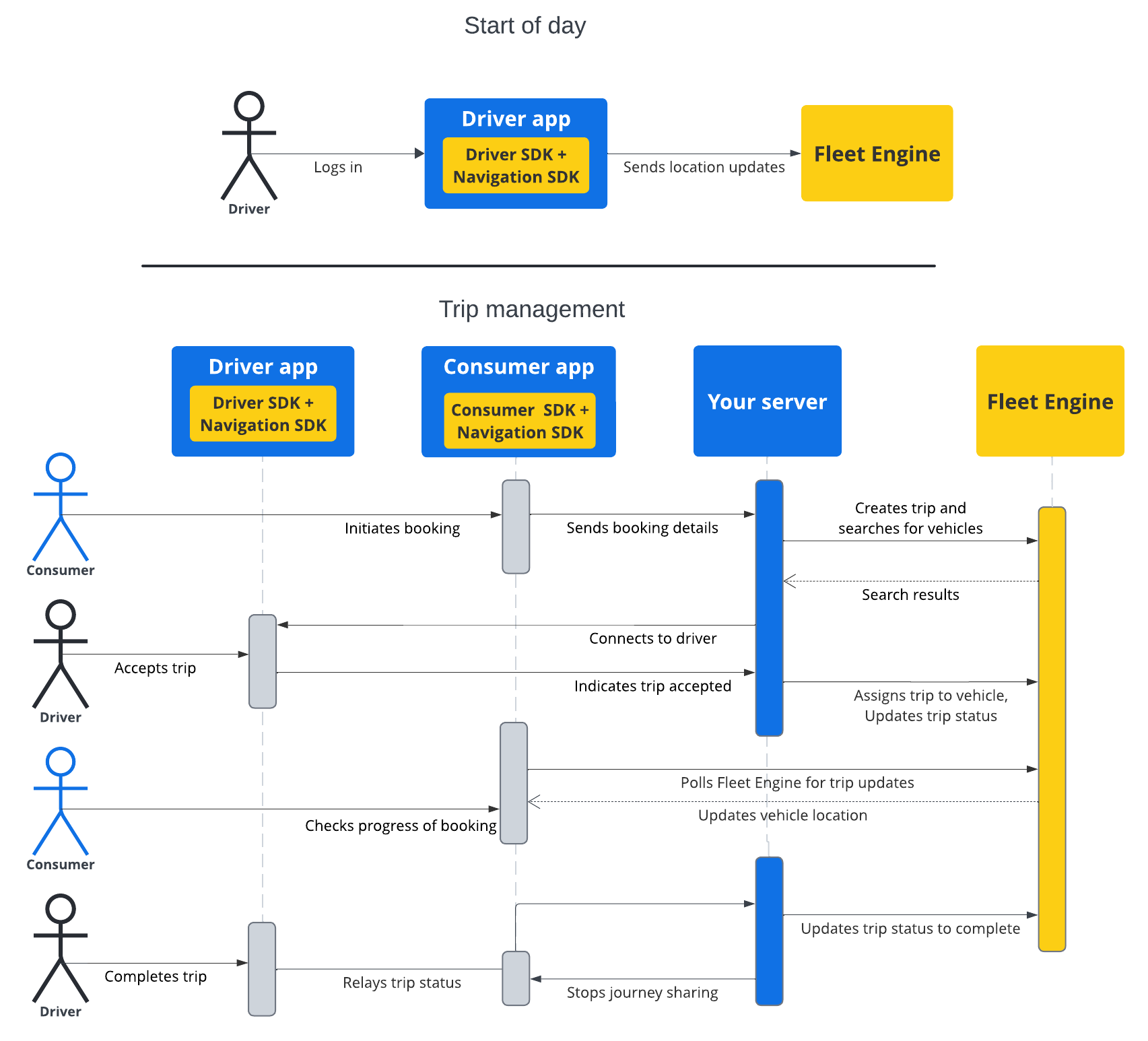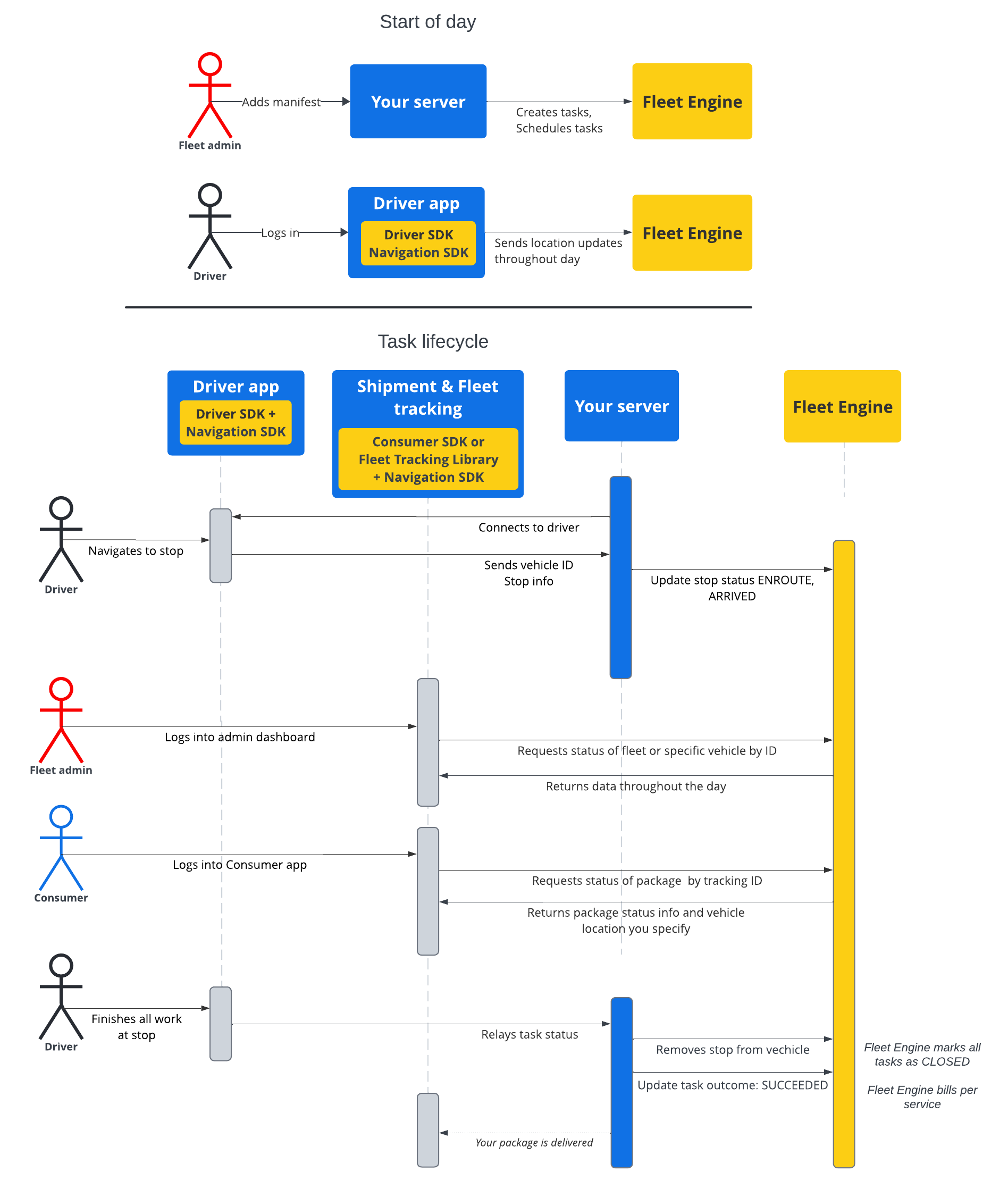 驾驶员体验和导航功能是移动服务软件包的一部分,该软件包可将 Google 地图体验嵌入到驾驶员应用中。
驾驶员体验和导航功能是移动服务软件包的一部分,该软件包可将 Google 地图体验嵌入到驾驶员应用中。
驾驶员体验和导航功能有哪些用途?
在驾驶员体验和导航方面,您可以使用 Navigation SDK 和 Driver SDK 来调整驾驶体验,以适应您的配送模式。使用 Navigation SDK 在应用中创建精细导航体验,实时引导司机。您还可以自定义导航体验,使其与应用的外观和风格相符,并通过优化路线和下车点来增强驾驶员的整体工作流程。
使用 Navigation SDK 自定义驾驶体验,并使用 Driver SDK 通过 Consumer SDK 预定任务概览和车队跟踪功能直观呈现驾驶员位置和路线进度。
为何要使用驾驶员体验和导航?
 如果您管理送货车队,那么为了满足消费者的期望,提高送货的可预测性和司机的生产效率至关重要。驾驶员体验和导航功能可帮助您更高效地为驾驶员规划路线,避免延误和漏送,并提高驾驶员的满意度。
如果您管理送货车队,那么为了满足消费者的期望,提高送货的可预测性和司机的生产效率至关重要。驾驶员体验和导航功能可帮助您更高效地为驾驶员规划路线,避免延误和漏送,并提高驾驶员的满意度。
- 提高司机满意度:您的应用可帮助司机在完成一天的工作时感到一切尽在掌握,并及时了解最新信息。借助熟悉的 Google 地图导航,您的司机无需学习新的地图界面。您还可以自定义体验,以强化品牌形象。
- 提高司机任务效率:通过反映实时路况的路线,引导司机前往正确的地点。对于需要快速上手完成任务的新手司机、兼职司机或季节性司机,这些信息尤其有用。此外,您还可以提供特定于配送服务的自定义路线和地图元素。
- 提高配送可预测性:借助嵌入 Google 地图体验的应用,您可以更加放心地让司机按照预期的路线方案行驶。让司机在您的应用内行驶还可以提高您收到的位置信号的质量。
运作方式
下图显示了驾驶员体验和导航的所有组件之间的操作顺序。Driver SDK 会将位置更新信息传达给 Fleet Engine 后端。Navigation SDK 会向驾驶员显示精细导航路线(和其他导航信息)。您的后端会处理与 Fleet Engine 的所有其他配送通信,例如创建和更新车辆及任务。
按需行程
下图显示了按需行程的操作顺序。它分为两个主要部分:一是司机向 Fleet Engine 启用位置信息分享功能的一天开始时间;二是使用 Fleet Engine 组件的简化版行程管理视图。如需详细了解行程流程,请参阅按需行程文档中的什么是行程?。

计划任务
下图显示了预定任务的操作顺序。这包括单个司机的典型配送工作日矩阵,以及如何使用 Fleet Tracking 库在 Fleet Engine 系统中处理其工作。
注意:您的系统可以使用货件跟踪和车队跟踪。借助货件跟踪功能,Fleet Engine 会过滤货件和司机信息,以便客户仅看到与其货件相关的信息。

如何使用驾驶员体验和导航
本节介绍一种实现带导航功能的驾驶员体验的方法。为了便于说明,此示例首先从前端实现开始。您可以先将 SDK 集成到您的司机应用中,也可以先将 Fleet Engine 与您的后端集成,以创建任务和车辆,然后开始实现。
- 将 Driver SDK 集成到您的司机应用中。Driver SDK 会向 Fleet Engine 服务发送实时位置信号。Driver SDK 封装了 Navigation SDK。如需了解详情,请参阅适用于按需行程(Android、iOS)和预定任务(Android、iOS)的 Driver SDK 用户指南。
- 在司机应用中实现 Navigation SDK 的功能。Navigation SDK 是一个库,可为司机提供自定义导航功能,例如精细导航路线、自定义路线和自定义地图元素。如需查看完整的开发者文档,请参阅使用 Google 地图进行导航。
- 使用 Fleet Engine 管理任务和车辆状态。Fleet Engine 是一种移动后端服务,可通过发出 REST 或 gRPC 调用与 Fleet Engine 通信。如需了解详情,请参阅 Fleet Engine 文档。

